December 9th, 2022 by specieschampion
Through the Natural Environment Bill and Scottish Biodiversity Strategy we need to ensure that Scotland’s species-rich grasslands are valued and restored. Machair, meadows and species-rich pastures must be protected and managed for their biodiversity and multiple ecosystem services.
Last year Buglife found that the abundance of flying insects in the UK had plummeted by nearly 60% over the last 17 years; highlighting a worrying trend and the crucial need for insect-focussed conservation research, nationwide.
The 2021 Bugs Matter findings, which were published in a report released by Kent Wildlife Trust and Buglife (Bugs Matter 2021 Full Technical Report), show that the number of insects sampled on vehicle number plates by citizen scientists across the UK reduced by a staggering 59% between 2004 and 2021. These findings are consistent with research which has widely reported declining trends in insect populations globally.
Insect counts differed across the UK, but there was no positive news for insects in any of our nations. England suffered the greatest decline with 65% fewer insects recorded in 2021 than in 2004. Wales recorded 55% fewer insects, whilst Scotland saw the smallest decline, still with 28% fewer insects in 2021 when compared to 2004 figures.
Inspired by the ‘windscreen phenomenon’ (a term given to the general observation that people are seeing fewer insects squashed on the windscreens of their cars today compared to several decades ago), Bugs Matter enlists the help of the public to monitor the health of the UK’s insect populations.
Insects and other invertebrates are critical to a healthy functioning environment. They pollinate most of the world’s crops, provide natural pest control services, decompose organic matter and recycle nutrients into the soil. Without them, life on earth would collapse.
We need a Scottish Biodiversity Strategy that protects the ecosystems our pollinating insects rely on. These habitats need to be connected and provide a network across which pollinators can move through the landscape. It is essential that we develop a comprehensive grassland database for Scotland to support the development of nature networks. We need to support species-rich grassland restoration, meadow creation and management in agri-environment schemes and support High Nature Value farming.
The Natural Environment Bill needs to legally protect ancient grasslands, hedgerows and field margins. We should encourage intercropping and use this opportunity to legislate to reduce pesticide use and ban certain pesticides eg neonicotinoids which we know are devasting for our wild bees.
As we manage the multiple competing targets within the Scottish Biodiversity Strategy, and make the changes we need to in order to tackle the climate emergency, we need to ensure we plant the right trees in the right place, avoiding planting on unimproved grassland.
Urban areas can also provide essential homes for pollinating insects, our cities and towns can contribute to Scotlands biodiversity and provide refuges in an otherwise impermeable landscape.
We need to use the Natural Environment Bill and Scottish Biodiversity Strategy to protect and maintain open mosaic habitats in urban areas, reduce light pollution which can negatively impact our insect populations, and increase the extent of blue/green infrastructure- green roofs, green bridges, walls, SUDs, rain gardens etc. We should use the Natural Environment Bill to ban or reduce the use of pesticides and herbicides by local authorities.
The Nature Restoration Fund is already helping many local authorities to make positive changes and they are doing a fantastic job. We need to ensure local authorities are supported and have the right resources, skills and capacity to deliver targets within the Scottish Biodiversity Strategy and National Planning Framework 4.
Insects are essential to supporting and maintaining a healthy environment, so when their numbers fall that is an indication that nature is in trouble. Insect numbers can also show where wildlife is recovering, and so can be used to measure how the work supported through the Scottish Biodiversity Strategy is helping nature’s recovery.
Natalie Stevenson, Scotland and Northern Ireland Manager at Buglife
Image: Claire Pumfrey
This blog is part of the LINK Thinks COP15 series. Click here to read the series of blogs by LINK staff, members and Honorary Fellows who will be highlighting the importance of targeted action in protecting and restoring our precious nature over the course of the conference.
December 8th, 2022 by specieschampion
It might seem strange for a plant enthusiast to be crossing their fingers and wishing for a thick layer of snow to cover up the vegetation, but that’s what I always find myself doing around this time of year. All season I’ve been taking every chance to enjoy our rare mountain plants – clambering about on steep slopes or hunting in the headwaters of the springs which bubble out of the rocks.
And it’s been a good season! Scotland is home to some fantastic, beautiful, specialist mountain plants – species which are perfectly adapted to brief, cool summers, and then long, snowy winters. Early in the year, when there was still snow on the high tops, purple saxifrage began to brighten up the crags and cliff faces with its clusters of pink-purple flowers. On a day in late March I found a scatter of these plants on a remote crag in Highland Perthshire. The same day, I watched a golden eagle displaying above the snowfields, and listened to a chorus of frogs in their high moorland ponds – all signs that spring was just around the corner.
Summer was a mixture of sweltering hot days, when I was cooling off on the summit plateaus amongst the trailing azalea and moss campion, and days of driving rain which I spent tramping across soggy hillsides looking for alpine meadow-rue, dwarf cornel, and hairy stonecrop, which stood out like a garish beacon on an otherwise dreary patch of moorland.
Now the plants have all settled down for a long winter sleep, and I’m waiting for snow. Why? Because many of our mountain plants require a thick blanket of snow to keep them insulated from cold winds and frosts. The harsh, snowy conditions also prevent other, commoner plants from moving up onto the mountain tops and out-competing the specialist species.
In a rapidly and chaotically warming world, our mountain plants face an uncertain future. New research by the University of Stirling published this year demonstrated how climate change is causing severe decline in mountain specialists, with one, snow pearlwort, being newly classified as Endangered as a result of this study. And Scottish Environment LINK’s Scotland’s Nature on Red Alert report showed that up to 93% of studied locations could become unsuitable for mountain plant species as average temperatures increase.
So, I might not get my snow. But I’m not losing hope for our mountains. This is because there are things we can do to make our mountains more resilient to a climate which is heating fast. We can reduce grazing pressure, to give mountain plants room to move in response to changing temperatures – too often, our rarest species cling to inaccessible crags, existing as isolated fragments instead of being part of a rich, vibrant, flourishing – and resilient – ecosystem.
We can restore our high-altitude mountain woodlands – a habitat so comprehensively destroyed by the activity of humans that it has virtually slipped from our collective cultural memory. Mountain woodlands offer protection from extreme events, provide habitat for rare plants, and slow down the rate of flooding and soil erosion – as demonstrated by this research by Sarah Watts and Alistair Jump. It’s time to recreate this lost habitat with a renewed urgency.
Our battered old mountains have weathered some storms in their time, and there’s a chance that they’ll weather this one. But only if we collectively decide to help them do so – and take action now, before it’s too late. Then we can all look forward to another season of dazzling technicolour plants fizzing and popping across the rolling mountains and craggy peaks.
To meet the commitments set out in the Scottish Government’s statement of intent on biodiversity, Scotland’s upcoming Natural Environment Bill in 2023 must contain ambitious nature recovery targets. The new Scottish Biodiversity Strategy (SBS) needs to set out how those targets will be met and must prioritise a programme of species recovery. These actions will help give our mountain plants a future.
Alistair Whyte, Head of Plantlife Scotland
This blog is part of the LINK Thinks COP15 series. Click here to read the series of blogs by LINK staff, members and Honorary Fellows who will be highlighting the importance of targeted action in protecting and restoring our precious nature over the course of the conference.
December 7th, 2022 by specieschampion
The COP15 biodiversity summit will take place in Montreal, Canada 7 – 19 December. The Montreal conference is the latest in a series of international UN biodiversity summits, equivalent to the climate COPs, aimed at conserving and ensuring the sustainable use of global biodiversity.
What is the Convention on Biological Diversity?
COP15 is the 15th Conference of Parties to the UN Convention on Biological Diversity. COPs take place every two years under the CBD. The CBD’s purpose is to conserve and ensure the sustainable use of biological diversity at every level.
At the 2010 talks in Nagoya, Japan, 194 countries (or parties) signed up to a series of 20 targets to be met by 2020. Dubbed the Aichi targets after the region in which Nagoya sits, they were created to address a wide variety of issues in support of global biodiversity. Following the conference, signatories were also required to devise national biodiversity plans to meet the targets. In the UK, biodiversity is a devolved policy issue, and so the devolved governments are responsible for creating and delivering their own action. The Scottish Government plan to publish the Scottish Biodiversity Strategy this month which is to be “the starting point in a process which will lead into the development of rolling delivery plans and, through the introduction of a Natural Environment Bill, statutory nature restoration targets.”
Fast forward a decade to 2020, and the 5th Global Biodiversity Outlook report revealed that these targets were spectacularly missed across the world. Despite world leaders promising a decade of concerted efforts to tackle the inexorable decline of nature, the world collectively failed to meet a single one of the 20 targets. Scotland only met nine of the 20 Aichi Biodiversity targets. This lack of progress and the deepening ecological emergency make it clear that while the last UN decade on biodiversity failed, this coming decade on ecosystem restoration cannot.
What’s the plan for COP15?
As parties prepare to meet in Montreal, initial plans for the new post-2020 biodiversity framework have already been drawn up. The final version will be decided at the conference but is expected to include an agreement to put global biodiversity on the path to recovery by 2030, and a target to protect 30% of the Earth’s land and seas by 2030.
We cannot afford to make the same mistakes and miss these targets a second time. The evidence is clear that continuing nature’s destruction will lead to thousands more extinctions, pose a serious risk to global food insecurity, and increase the likelihood of further pandemics like Covid-19. And as the climate crisis worsens, degraded ecosystems also limit our resilience and ability to adapt to extreme weather events.
What role can Scotland play in influencing the outcome of COP15?
A new international deal for nature must be matched by domestic ambition to bend the curve of biodiversity loss and deliver commitments made under the CBD. Although the UK is a party to the convention and will therefore be expected to deliver on the targets that are agreed, Scotland is responsible for the implementation of international agreements in devolved areas like biodiversity.
The Scottish Government has committed to protect at least 30% of Scotland’s land and seas for nature by 2030, and highly protect 10%. This commitment goes beyond those of the other governments in the UK and aligns with the European Union’s 2030 Biodiversity Strategy. LINK also welcomed the Edinburgh Declaration on post 2020 Global Biodiversity Framework, which has called for a collective commitment from subnational Governments, cities, and local authorities to raise ambition for nature’s recovery.
However, whilst these announcements are welcomed, Scotland needs to show that they are serious about tackling the biodiversity crisis by translating these promises into genuine action on the ground. We want to see:
- Targets: To meet the ambitious commitments set out in the Scottish Government’s statement of intent, Scotland’s Biodiversity Strategy and Natural Environment Bill must contain ambitious and meaningful legally binding targets, and be supported with the resources needed to deliver nature’s recovery.
- Programmes of Ecosystem Restoration and Species Recovery: A habitat-focused approach, working to restore specific ecosystem types via dedicated programmes of action, will enable efforts to be targeted to where it is most needed. We need a national programme of species recovery targeted at helping threatened species to recover.
- Adequate financing and a framework to track progress: A robust monitoring, enforcement, reporting, and verification system will also be crucial for assessing progress towards targets, and efforts to reach them must be supported by appropriate funding.
- Mainstream: Mainstreaming biodiversity delivery across government will be critical to halting and reversing nature loss. Furthermore, integration of an effective biodiversity duty across all government sectors is now urgently needed with appropriate and transparent reporting to enable progress monitoring.
If it can make these things happen, and if it can help inspire the world to treat nature and climate with equal urgency, the nature COP might just be our next big chance to save the planet.
Juliet Caldwell, Advocacy Officer at Scottish Environment LINK
This blog is part of the LINK Thinks COP15 series. Click here to read the series of blogs by LINK staff, members and Honorary Fellows who will be highlighting the importance of targeted action in protecting and restoring our precious nature over the course of the conference.
Image: Sandra Graham
December 7th, 2022 by specieschampion
The COP15 biodiversity summit will take place in Montreal, Canada 7 – 19 December. The Montreal conference is the latest in a series of international UN biodiversity summits, equivalent to the climate COPs, aimed at conserving and ensuring the sustainable use of global biodiversity.
A new international deal for nature must be matched by domestic ambition to bend the curve of biodiversity loss and deliver commitments made under the CBD. Although the UK is a party to the convention and will therefore be expected to deliver on the targets that are agreed, Scotland is responsible for the implementation of international agreements in devolved areas like biodiversity.
This series of blogs by LINK staff, members, Honorary Fellows and invited guests highlight the importance of targeted action to protect and restore Scotland’s nature.
Image: Calum McLennan
Blogs
7th December 2022
COP15: An opportunity for Scotland to lead the way on nature’s recovery
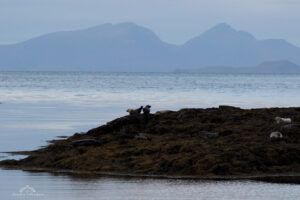
8th December 2022
A Future for Mountain Plants (Alistair Whyte, Plantlife Scotland)
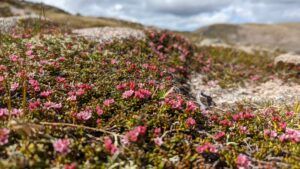
9th December 2022
Bugs Matter – The Importance of Urban and Grassland Ecosystems (Natalie Stevenson, Buglife)

13th December 2022
The Importance of Freshwater Ecosystems (Sheila Gundry, Froglife)

15th December 2022
What does the ocean need from COP15? (Esther Brooker and Fanny Royanez, LINK)
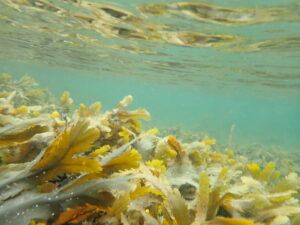
6th January 2023
2023 must be the year where we turn a corner for nature (Dan Paris, LINK)
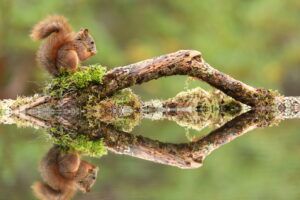
9th February 2023
Reflections from a back garden on COP15 (Claudia Beamish, LINK Honorary Fellow)
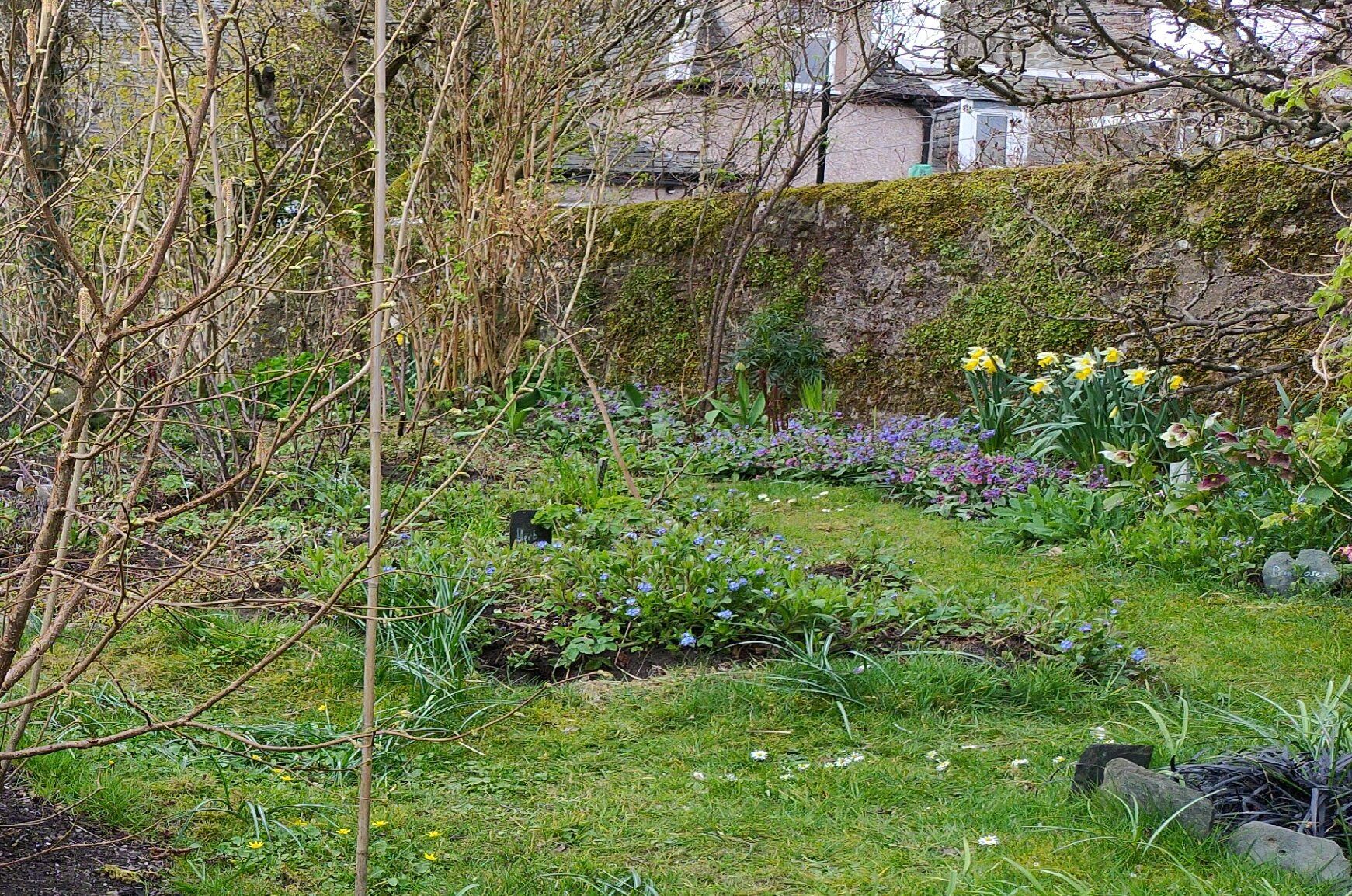
13th February 2023
Humanity’s war on nature: was COP15 a battle cry or a white flag? (Deborah Long, LINK)
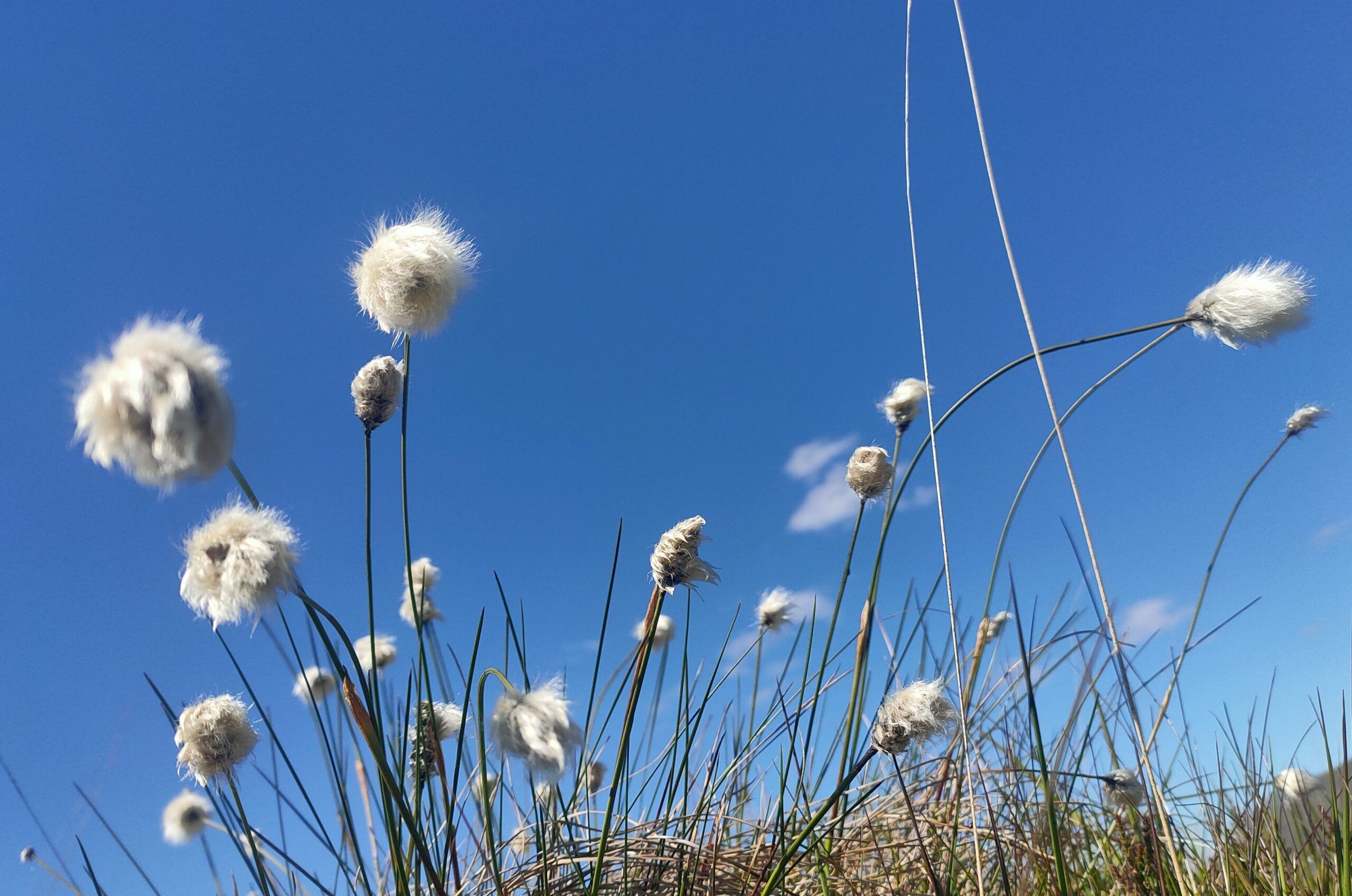
November 28th, 2022 by specieschampion
The Fourth National Planning Framework (NPF4): revised draft was published 8 November 2022 and sets out a plan for Scotland to create sustainable, liveable and productive places to improve people’s lives.
Bruce Wilson, Head of Policy and Advocacy at Scottish Wildlife Trust, represented LINK when giving evidence to the Local Government, Housing and Planning Committee on 22nd November. Bruce highlighted that LINK welcomes the changes made to significantly improve NPF4 and appreciates the work the Committee has done to ensure the planning system plays its part in restoring nature, as well as delivering for people and climate.
Bruce highlighted that ‘the equal weight given to climate and nature in this revised draft is strongly welcomed.’ This provides clarity for decision-makers and recognises the interrelated nature of these issues. This is not to say that there will not be challenges in the implementation of the policies and much will depend on future guidance and decision-making.
The revised draft strong step in the right direction to include a definition of nature-based solutions in line with the IUCN definition; ‘Nature-based solutions are actions to protect, sustainably manage, and restore natural and modified ecosystems that address societal challenges effectively and adaptively, simultaneously providing human wellbeing and biodiversity benefits.’
The strong policy wording on forestry and woodland is very welcome and has been strengthened since the last iteration of the Draft NPF4. For example:
- Provisions for ancient woodland and ancient and veteran trees have been improved even further, with the use of clearer language describing that developments will not be supported that impact on these habitats.
- Individual trees are highlighted in the document now, which is a positive improvement.
- Any land with existing woodland, or that has been identified as suitable for woodland creation must be enhanced, restored and should have additional trees integrated into development design.
We welcome the intent of Policy 3, to protect biodiversity, reverse biodiversity loss, deliver positive effects from development and strengthen nature networks. Although nature networks are mentioned numerous times in this policy, it is not clear whether guidance will follow on this. NatureScot have been commissioned by the Scottish Government to develop and publish a national framework setting a clear vision, principles and approach for local delivery of Nature Networks in Scotland. It is disappointing that this is not mentioned in the Delivery Plan.
Bruce highlighted that ‘we need to know the impact that we have created in order to have positive effects of biodiversity’ and ‘we can’t manage what we don’t measure and there isn’t enough emphasis on how we measure our biodiversity impact’. We must be very wary of claiming positive effects without strict obligations to first of all work out what biodiversity is being lost.
The planning system doesn’t hold all the answers to solving the biodiversity crisis, but it has the potential to play a significant role to deliver meaningful change to protect and enhance Scotland’s nature. NPF4 is a crucial opportunity to ensure Scotland’s planning system delivers transformative, meaningful action for people, climate and nature. We will be looking closely at NPF4 to see if it delivers the transformational change promised.
Juliet Caldwell, LINK’s Advocacy Officer
Image: Calum McLennan
November 23rd, 2022 by Deborah Long
At the end of COP26 in Glasgow last year, we concluded that some progress had been made, but the rate of progress was not fast enough (LINK Thinks blog 22 November 2021).
Another 12 months into the decade when a real and accelerated effective change is needed, has COP27 delivered?
In a single lifetime, we have put 1.5 x more carbon into the atmosphere. And we have halved the extent of remaining wilderness in the world. These are grim statistics. But are they moving the world’s politicians into more effective action to change our course?
Although we heard renewed commitment to 1.5oC, we didn’t see the level of commitment to actions needed to achieve that. The commitments to accelerate efforts to phase ‘down’ coal and fossil fuel subsidies still lag behind business, technological and civic society shifts to renewable energy. Immediate action to reduce emissions drastically was not addressed. This reluctance looks like more of a sop to fossil fuel lobbying than scientific evidence and civic needs.
The loss and damage funding, and the Santiago Network for Loss and Damage, are good moves forward, although slower than needed given the missed 2020 targets on climate finance. And the Forest and Climate Leaders’ Partnership launch aiming to halt forest loss and land degradation by 2030 is helpful.
But COP needs to move with the changing times: it needs to move beyond its original purpose of international negotiation much more towards the purpose of delivering implementation and accountability. Indeed, implementation, the theme of this year’s COP27, requires a lot more cooperation than we’ve seen as well as the courage to map out and action everything we can do better.
Cooperation and implementation works across COPs too: nature didn’t really figure in this year’s COP. Unlike in Glasgow, where nature was seen as a key element for action, this year, despite COP15, the biodiversity COP, being just weeks away, it did not really feature.
The climate crisis and the biodiversity crisis are one and the same thing: you can’t reach net zero without nature and you can’t halt nature loss without meeting net zero. Why then was nature largely absent from COP27? We urgently need joined up action and ambition to cut emissions and to halt and reverse the ongoing catastrophic biodiversity loss and species extinction. That requires a change in mind set. We need to move out of our silos tackling one problem at a time – we need to find a way for systemic change, built on collaboration and cooperation. We need to work together to achieve justice and access to a safe climate and thriving and resilient ecosystems for the people of today and for future generations.
That leaves a big job for COP15 in Montreal in December. Agreeing the international global targets to halt the loss of nature by 2030 and restore nature by 2050 will take us a long way: we will be able to measure our actions, learn lessons on what works and what doesn’t and act accordingly. But success will depend on even greater ambitions to work together, to collaborate across borders to limit nature loss across the world, to reduce the world’s reliance on natural resources and to move instead towards a global circular economy where natural resources are only used at the rate at which they are replaced.
And therein lies the big unspoken issue. Exponential changes in carbon emissions and loss of wilderness have happened in just 80 years. But forests take 100s of years to grow to maturity, peatlands and coral reefs take 1000s of years to reach full functionality. What humans do in a few decades, nature takes millennia. Ironically, that means humans have to change very quickly to match our rates of consumption to the natural world’s rate of accumulation: we need to speed up moving towards a much much slower rate of use. And we need to do that within a decade.
Join us back here on LINK Thinks for COP15, when we’ll be sharing more thoughts on the negotiations in Montreal in December.
Deborah Long, Chief Officer at LINK
October 19th, 2022 by Deborah Long
A guest blog from Mike Robinson, LINK Honorary Fellow.
The first nine months of this year have been some of the most disruptive I have ever known. Almost everyone I speak to feels they have been working harder than ever but can’t quite put their finger on what they’ve achieved. It is relentless and it feels like we are all drowning in an ever greater barrage of stuff that needs done.
Many people are still working incredibly hard, leading to online debate about whether mass staff burnout is imminent. Some are still getting ill and others are struggling, faced with uncertainties, unsure how to adapt, frustrated or on the sharp end of a latent anger at covid and restrictions and well everything. I wonder if the public response from some is a grief response. Many are trying to get out and enjoy their renewed freedoms, leading to a larger proportion of people being away than I can ever remember. Some have taken the opportunity to reconsider their career, or their retirement. And others have returned to jobs from ‘Covid emergency’ roles of various kinds and are now playing catch-up.
It’s not been easy getting people to convene, let alone to make things happen, and that’s without the backdrop of war, travel disruption, Brexit inspired staff shortages, severe strains on public budgets, striking workers and rising food and energy prices. It does all feel quite relentless. We are all worried about the spiralling cost of living crisis, and many (especially those still in work) are realising their pension provision is probably inadequate.
My sense is that we are all simply full to the teeth with bad news and desperate for real positivity, clear leadership and a reversal of fortunes. We could all do with something to look forward to – a coming together – a rebuilding of confidence, tolerance and trust. And some sheer joy.
I have met so many people from all sorts of sectors across society who report being really, really busy but not entirely sure what they’ve achieved, and are struggling with burn-out, and, I sense, beating themselves up for what they haven’t managed to do, personally or professionally. Others are being pushed at work too hard to ‘catch up time’. As a result I find myself wanting to caution them (and their managers), to go easy, to not beat yourselves up about what hasn’t happened yet. Because it has been a remarkably odd period. In many ways it feels to me like the last 2 years don’t count. Although plenty has happened, it all feels a bit of a blur and indistinct. Maybe, for now at least, it’s simply okay to have got through it. Only now do I think we are beginning to get enough distance from it all to actually look ahead again.
So my first response to all of this is that we each need to be kind to ourselves… This has been a genuinely exceptional period, so there is no point being over critical, angry or overly frustrated – it was outwith all of our control. Sometimes life blows us off course.
Secondly, I think we need to remember to be kind to those around us. I don’t think anyone really knows quite how to respond right now, or exactly what the right thing to do is. Some people want to stay at home, others to wear masks, others to flaunt all rules and party and most people are distracted by the immediate worries around the cost of living crisis. There is no one response. I think we need to respect other people’s uncertainties and anxieties, and let them work out how to respond.
Thirdly I would like to encourage people to be forgiving of each other. I feel I am almost having to re-learn the art of conversation, especially small talk (never a strong point) and I’m bemused at the increased quiet spells I find in group conversation which I never remember being so frequent or awkward before Covid. It’s going to take time.
And finally I would encourage people to demand better. We have had to watch as our political leaders tried to pick their way through one of the most difficult periods in recent memory. Most though, obsessed with Brexit ideology, failed to respond quickly or adequately to the Covid pandemic, and are also failing to respond to the negative impact of Brexit and the Ukraine war, or to the cost of living crisis, leaving most of us far worse off economically, socially and environmentally than at any point I can remember.
The short-term problems of cost of living and resource scarcity, and the longer-term problems facing all of us, like climate change, biodiversity loss, geopolitical realities and major social inequalities, demand some grown up responses and urgent action. We need leaders promoting empathy, altruism, collaboration and community cohesion.
Perhaps we should use the last 3 months of 2022 to prepare properly and get ready… We are now going to get swamped by the cost of living crisis, and some of the immediate madness that seems to surround us politically. So rather than drown under it, we need to take the opportunity to pull back, to plan and regather. We need to refresh ourselves and our approach. We need to work more collaboratively than ever, because there are not enough of us to go round.
I think we also need to learn to trust people again – lots of other people are trying to help too, if we let them, and we’re not going to succeed without them. We need to use intersectionality as a way to build our support and galvanise action, and spread the awareness that whatever your starting point in your concern for people and the planet, we are actually all in the same fight. However, if we use it as a way to divide, diminish or alienate some of the progressive or sympathetic voices we will lose.
Many people out there want to help, they just don’t really know what to do. We’ve got to get better at talking to them and not just ourselves, because we need them. And better at articulating more simply, what we want. “More biodiversity” is not an ask, it’s a principle. What does it actually look like?
We know we need to bring about a massive increase in the speed and scale of change and it’s not happening… Business as usual is a dirty phrase … How do we accelerate action and respond like it is an emergency? I gave a speech outlining the climate emergency to Link Congress in Birnam in 2007 (15 years ago), and we’re still having it. So pace yourself for the long haul, or we’re all going to burn out.
In the mean time, I want to thank all of you for what you do. Thank you for giving your working lives to trying to make the planet a better place. Thank you for standing up for wildlife and nature, and ultimately humanity. Thank you for doing the right thing, even though it’s difficult and largely thankless and can feel like pushing water up a hill. And thank you, because it is all of you that make this feel less of a lonely battle.
Be kind to yourselves, you can’t fix it all and you’ll never do it alone. Let’s use the rest of 2022 to build our own resilience. And starting in 2023, we will be ready to do it all again, only bigger and better.
Let’s make it count.
Mike Robinson, Chief Executive at Royal Scottish Geographical Society and LINK Honorary Fellow.
This blog is the after dinner speech that Mike gave at LINK’s 2022 Congress: Wellbeing for All.
October 6th, 2022 by Fanny Royanez
Guest blog by WWF Scotland Policy Advisor, Mario Ray
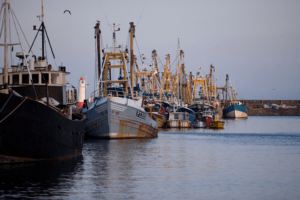
© naturepl.com / Toby Roxburgh / WWF
The UK’s fishing industry has long been a fundamental part of vibrant coastal communities, providing livelihoods to many and food to feed us, from Cullen Skink on a cold winter’s evening, to whole grilled mackerel with lemon and garlic, or scampi and chips by the sea.
However, our seas, wildlife and the fishers whose livelihoods are dependent upon healthy marine ecosystems, are suffering. International marine biodiversity targets have not been met and the UK, as a whole, has failed to meet 11 out of the 15 indicators for achieving Good Environmental Status. Commercial fishing continues to be the most widespread pressure on the marine environment but it also has real opportunity to provide solutions and help recover our seas if done sustainably.
Meanwhile, for fishers, uncertainties regarding market access and the increase in fuel prices have resulted in unemployment and family upheavals; with some fishers tying up their boats for good and having to relocate their families in search of alternative employment. It is a turbulent time for the fishing industry and they need to be given certainty.
The Discard Ban
For many years one of the key concerns over the impacts of fishing on biodiversity was the wasteful nature of many fisheries in which significant amounts of unwanted fish were dumped back into the sea, a process known as discarding.
A discard ban was introduced with the hope that it would incentivise more selective fishing and less discarding. The rule made sense, but it was poorly managed and enforced with little evidence of widespread uptake. The fact that such a policy which required fishers to significantly change the way they operated, was not accompanied by robust monitoring to ensure a level playing field, gave it little chance of success from the outset; and many saw this coming.
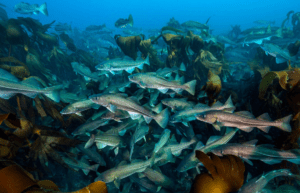
© Alexander Mustard / WWF-UK
How do you catch a haddock without catching a cod?
In the North Sea a lot of the fish we catch are part of mixed fisheries – fish like haddock and cod tend to swim together (unlike mackerel, which swims higher up in the water column as a more exclusive and fast-moving shoal).
The problem for fishers who target these mixed fisheries is that the quota for one fish (e.g. cod), might be very low or even set to zero, while the quota for another (e.g. haddock) might be much higher. So how do you catch a haddock without catching a cod?
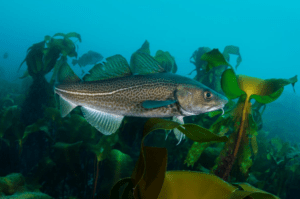
© Alexander Mustard / WWF-UK
We are constantly learning new things about the UK’s marine life. If you chase a haddock, for example, it will likely swim up towards the surface. If you chase a cod, it will swim down to the safety of the seabed.
If you have a fishing net with larger ‘escape panels’ in the roof of the net – then you’ll not catch many haddock, but you will catch cod. Other fish can take advantage of their shape, e.g. sole, which will squeeze through fish nets with horizontal slits. Using highly selective fishing gear (that is designed taking into account fish behaviour, preferences, shape etc.) can help catch the fish you want and avoid the ones you don’t.
However, an obstacle to investing in highly selective fishing gear is that it comes at a cost. The cost of the gear itself which can run into the tens of thousands and the cost of some marketable fish that pass through the ‘selective’ gear. With very little monitoring at sea, the impact of the discard ban was not clear. While some complied and invested in new gear, others continued to operate with business as usual. Without the level playing field, which would have been achieved with robust monitoring, it created a competitive advantage for those that continued to discard.
A game-changing technology is ready for roll-out
The good news is there is a tried and tested solution that’s a win-win-win for wildlife, fishers and you: Remote Electronic Monitoring (REM) with cameras.
REM is a powerful and cost-effective tool that answers three fundamental questions: where boats are fishing, when and how they are fishing and most importantly, what is being removed from the water – target and non-target species. With a much clearer picture we can improve fisheries management, help prevent overfishing and ensure fishing is sustainable for future generations.

Design and illustration by edharrison.co.uk
People are increasingly concerned with the provenance of their seafood, and the impact it has on marine wildlife. The best tool to help de-risk fisheries and give green light for access to more retailers is REM with cameras. This technology enables fishers to demonstrate to the public and retailers that they are operating in a sustainable way, using best practice and highest levels of selectivity.
REM would also empower fishers by putting them at the heart of the data collection process, bridging the gap between them and fisheries managers. Fishers spend a significant amount of their lives at sea and claims that catch quotas are out of touch with what they are seeing in their nets need to be addressed. The ‘fish-counting’ cameras provide fishers with an opportunity to document what they are seeing and feed into the science of quota setting. In the Netherlands, smart cameras have been taught to differentiate between different fish species. With ongoing developments in technology, we envisage a day where scientific data will be accessed by fisheries, managers and fishers alike, in real-time, after each haul.
REM has been tried and tested for more than 20 years and is in use across many fisheries globally. In Denmark, following successful trials, REM is being rolled out across their fishing fleet which is very similar to that of the UK. Across the food sector, it has become standard practice to safeguard work places through the use of cameras. Cameras are mandatory in slaughterhouses in the UK, with recordings processed in line with data protection requirements to address privacy issues. Fisheries should be no different.
UK governments must seize the opportunity
Following Britain’s departure from the EU, UK governments are developing new ‘catching’ policies which if done right, could both improve the health of our seas and make livelihoods more secure.
Accountability and confidence will be central principles of these new policies, however, without equipping vessels with the tools they need to provide the required levels of at-sea monitoring these policies will fall short of their objectives.
Last month, one of the UK Government’s own statutory bodies, Natural England, released a report with the key message that Remote Electronic Monitoring (REM) with cameras is vital to achieving Good Environmental Status (GES) and recommended the immediate roll-out of this technology to the ‘highest risk’ fleets such as demersal trawls to: 1) help promote compliance; 2) collect data for data-poor fisheries; 3) protect sensitive species; and 4) contribute to achieving GES.
It was disappointing that UK governments did not take the opportunity to commit to rolling out REM across the UK fishing fleet when they produced the draft Joint Fisheries Statement – a document that sets out how fisheries will be managed across the UK now that we have left the EU.
There is still an opportunity, however, as the final version of the JFS has yet to make an appearance. We believe there is still an opportunity for all four government administrations to provide a unified voice in support of REM with cameras being a key element of fishing in UK waters. UK governments are still to develop their individual plans or ‘catching policies’ which should require REM as a key means of helping delivery and providing support.
The Scottish Government is to be credited for taking forward REM with consultations for roll-out to the scallop dredge and pelagic fleets, however, the concern is that plans to roll-out REM are not prioritising the vessels which need it the most.

© Alexander Mustard / WWF-UK
We know that gillnets and longlines carry some of the highest risk of seabird bycatch while whales are often accidentally killed in creel lines and other cetaceans like porpoises become entangled in gillnets and dolphins are caught in trawl nets. We are yet to achieve good environmental status for whales and dolphins, and the situation for seabirds is getting worse instead of better1 We also know that demersal trawls have the highest risk of shark and skate bycatch and discarding. REM can help to monitor bycatch rates and the use of mitigation measures.
Whatever changes are implemented in the new catching policies, we believe that the degree to which they are underpinned by robust at-sea monitoring with cameras will be a defining factor in achieving sustainable fisheries in the UK.
The question is… when will the UK governments step up and roll-out REM to the fleets that highest-risk fleets and embrace the benefits that REM brings for wildlife, fishers and the consumer?
September 29th, 2022 by Deborah Long
On 27 September, LINK held our 2022 Congress, the first since 2019. It was fantastic to see everyone, share our highs and lows and reinvigorate ourselves and each other. When we set it up, we had no idea how topical our theme would be to the week. In a week when Westminster politics reflected the worst in society, when levels of despair about their lack of vision were visceral, it was a good time to come together in a massive group hug. Our theme this year was wellbeing and inclusion. We are all working under enormous pressures: most, if not all members, are under capacity. Staff energy and morale is low and the pressures to do even more are growing. The feeling is that now is the time – that if we don’t get it right now, we will have failed today’s society and today’s wildlife and landscape, as well as future generations. Of course, that’s rubbish: as a sector we have a tendency to beat ourselves up far too much.
So, we had two key messages for Congress:
- We are not alone. We have each other and we have this fantastic network we’re all part of.
- We are making our organisations and network stronger and bigger. We know from our member survey in March 2021, that our sector is not as diverse as it could be, not as inclusive as it should be. We all want to change that because it will make us better and stronger for the environment and for society too.
We introduced our new Nature for All project, supported by National Lottery Heritage Fund, which will be looking at how we can support our members, and LINK itself, to become more inclusive, more diverse and open to all. We are doing this with the support of our partners in cemvo Scotland and they, alongside Leigh, our new Equality, Diversity and Inclusion Officer (EDI) Officer, ran 3 introductory workshops.
Our workshops explored equality, diversity and inclusion as a human rights issue, disability and neurodiversity at work and developing an anti-racist approach. We learnt about the synergies behind the ambition across the LINK network to engage in these issues and the enormous appetite for change. It is clear that we are on a long journey and at the start of the conversation. Some of us are further ahead than others, but the key thing is our clear and stated ambition to do more, to be better. We explored how changes in language and terminology are really important and the workshops helped us to understand and use the best language and terminology to be inclusive and welcoming to all. We learnt about the importance of representation and including everyone at every level and doing that visibly. We know that the environment sector in Scotland is very white, pretty middle class and often able bodied. Today we started to do something about that. By becoming more active, we are increasing our knowledge and understanding. We’ll be mainstreaming EDI into our decision making and our strategies and we’ll be building on our data baseline and gathering better data, on recruitment for example.
In the evening, we turned the focus inwards, to look at how the scale and rate of change is impacting us, as people, as team members and as colleagues. The potential for sector burn out is especially high amongst eNGOs. Sick levels and absences from work are impacting across teams and the levels of stress we are under are significant. We talked about building resilience and achieving change and maintaining energies. It’s too easy to get bogged down by immediate urgencies. We looked at what we’ve achieved – and it’s been a lot. We looked at what we need to do, how young people want to be involved and why. And we heard from Mike Robinson, one of our Honorary Fellows, whose recent blog about kindness underlined the importance of this topic and how we need to be kind to each other if we are to maintain our momentum.
As we move into 2023, our vision is for nature to be restored, communities to be resilient and future generations’ quality of life to be secure. Through remaining positive, reflecting hope, capturing our own agency to lead and offer inspiration and by working together, we will get there. It’s not just a case of keeping calm and carrying on. It’s about inspiring and supporting action and showing what the future could look like.
What is this life if, full of care,
We have no time to stand and stare….
WH Davies
Deborah Long, Chief Officer at LINK.
September 6th, 2022 by danparis
Today’s Programme for Government comes amid severe challenges and political uncertainty. It is more important than ever that government, at all levels, retains a laser-focus on tackling the nature and climate emergencies, and ensures that this is a decade of delivery.
This parliamentary term will see vital legislation across a number of policy areas, including legally binding targets to restore nature and land reform. There will also be a new Scottish Biodiversity Strategy, stronger protections for marine habitats, and a new National Planning Framework. Scottish Environment LINK welcome today’s confirmation that the Circular Economy Bill and Wildlife Management (Grouse) Bill, which will implement recommendations of the Werritty Review, will be introduced in 2022-23.
The introduction of a new system of farm funding will be one of the most significant measures taken forward in this parliament. This is a once in a lifetime opportunity to make farming work for nature, climate and people. LINK welcomes the commitment in the Programme for Government to explore capping of base-level payments to release additional funding for nature- and climate-friendly farming.
Scottish Environment LINK welcomes the prominence of nature restoration within the Scottish Government’s priorities, and we will work constructively to ensure the steps taken match the urgency of action required.













